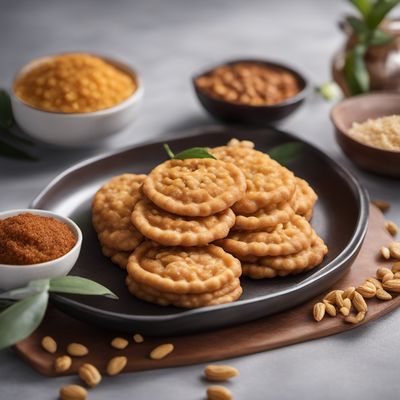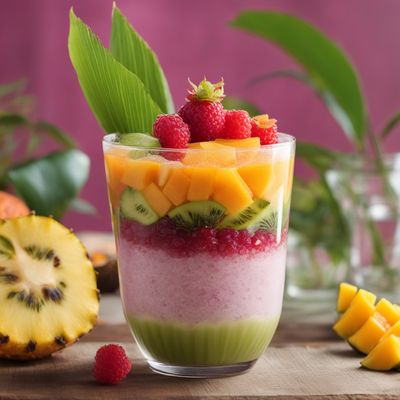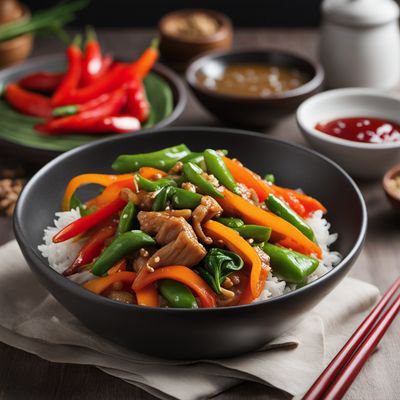
Ingredient
Litchis
The Exotic Delight: Litchis
Litchis have a rough, reddish-brown outer skin that is easily peeled to reveal translucent, juicy flesh. The flesh is sweet and aromatic, with a flavor reminiscent of grapes and roses. The texture is firm yet tender, with a slight crunch and a moist consistency.
Origins and history
Litchis are native to Southeast Asia, where they have been cultivated for over 2,000 years. They hold cultural significance in countries like China, where they are often associated with good luck and prosperity. Litchis were introduced to other parts of the world through trade routes and are now grown in tropical and subtropical regions globally.
Nutritional information
Litchis are a good source of vitamin C and dietary fiber. They are also low in calories and fat, making them a healthy choice for a sweet treat. Additionally, litchis contain antioxidants that may have various health benefits.
Allergens
Litchis may cause allergic reactions in some individuals, particularly those with a known allergy to fruits in the Sapindaceae family, such as rambutan or longan. Symptoms may include itching, swelling, or difficulty breathing. Consult with a healthcare professional if you suspect an allergy.
How to select
When selecting litchis, look for fruits that are plump, firm, and have a vibrant red or pink color. Avoid fruits with blemishes, bruises, or signs of mold. The skin should be intact and not overly dry. Litchis are typically available fresh during their peak season, which varies depending on the region.
Storage recommendations
To maintain the freshness and quality of litchis, store them in a perforated plastic bag or a container with ventilation holes in the refrigerator. This will help retain their moisture and prevent them from drying out. Consume within a few days for the best taste and texture.
How to produce
Litchi trees can be grown in tropical or subtropical regions with a warm climate. They require well-drained soil, regular watering, and protection from strong winds. The trees can be propagated from seeds or grafted onto rootstocks for faster fruit production.
Preparation tips
To enjoy litchis, start by removing the outer skin, either by peeling it with your fingers or using a knife. Once peeled, the flesh can be eaten as is or used in various dishes and desserts. Litchis pair well with other tropical fruits, such as mango or pineapple, and can be added to fruit salads, smoothies, or cocktails. They can also be used in savory dishes, such as stir-fries or salsas, to add a touch of sweetness.
Substitutions
Rambutan, longan, or even grapes can be used as substitutes for litchis, as they share similar flavor profiles and textures. However, each fruit has its own unique characteristics, so the substitution may slightly alter the overall taste and appearance of the dish.
Culinary uses
Litchis are widely used in Asian cuisines, particularly in desserts and sweet dishes. They are commonly found in fruit salads, ice creams, jellies, and beverages. In Chinese cuisine, litchis are often paired with poultry or seafood to create a balance of flavors.
Availability
Litchis are primarily cultivated in tropical and subtropical regions, including countries like China, India, Thailand, and Vietnam. They are also grown in other parts of the world with suitable climates, such as the United States, Australia, and South Africa.
More ingredients from this category
Recipes using Litchis

Mitsumame - A Refreshing Japanese Dessert
Summer Delight: Mitsumame - A Burst of Flavors and Textures

Hakka Glorified Rice
Hakka Fusion Delight: Glorified Rice with a Twist

Guangxi-style Quesada Pasiega
Silky Delight: Guangxi-style Quesada Pasiega

Chè Thái - Vietnamese Mixed Fruit Dessert
Tropical Delight: A Vibrant Vietnamese Mixed Fruit Dessert

Lizhi Rou Stir-Fry
Savory Lychee Pork Stir-Fry

Chinese Buddhist Es Teler
Zen Delight: Chinese Buddhist Es Teler